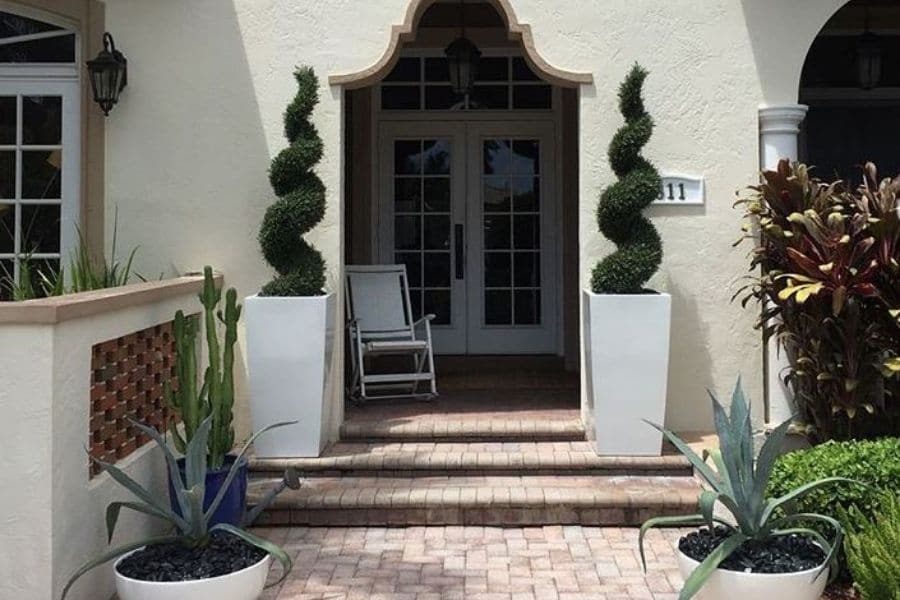Does pot shape and size affect the growth and health of plants? Yes, it does, is the short answer. Here is the long answer to choosing the best pot for your plant and nailing your landscape design.
Just like an Englishman’s home is his castle, a plant’s pot is its palace. The pot is a place of safe refuge, a room to call one’s own, and a space to not just live but to grow and flourish. Hence, matching your beloved plant to its pot is not something to gloss over but is worth careful deliberation.
- What Does Plant Size Mean?
- What Pot Size Do I Need?
- What Is The Optimum Planter Size?
- Easy Plant Pot Size Chart And Recommended Plants
- What Do I Do When My Plant Gets Too Big?
- Does Plant Pot Shape Matter?
- The Different Shapes Of Pots For Plants
- Does My Planter Need Holes For Drainage?
- How Planter Thickness Can Make Or Break Your Plant
- The Best Shapes And Sizes Of Jay Scotts Planters

Knowing that containers are an important consideration can be overwhelming when you realise the spectrum of available pots. You will be surprised to find that different shapes, sizes, materials, colours, styles, weights, etc. of flower pots have so much impact on the plants inside. We know this, so we compiled a guide to help you choose the best shape and size of your next planter!
What Does Plant Size Mean?
You may have seen plants described in sizes i.e., in inches or gallons. This does not refer to the actual plant. Here, inches refers to the diameter of the pot that the plant came in while gallons is in reference to its container volume. Take for an example a 10” plant, this is a plant that is growing in a 10” diameter pot, or in a pot that is usually 2.5 to 3 gallons.
Most pots fit loosely into a system that increases by 2” starting from 2”, then 4”, then 6” etc. This range is endless with some of our own products reaching sizes of 60 inches.
Houseplants will usually have a small size pot that is convenient for the home, allowing accessibility to move it around and perch it on shelves and tables.
When container gardening with outdoor plants, the plant size will need to be larger to allow for stability in the wind and other outdoor elements.

What Pot Size Do I Need?
Size Matters
The big and small of it is that size matters when it comes to choosing the right pot for your plant.
What happens when planters are too big?
There is evidence that doubling a pot size can encourage up to 40% increase in growth in some plants. Ensuring the proper water levels, food and proper soil mixture is essential for the health of any plant.
However, if the container is too large for the plant, if excessively watered with poor drainage, the soil could dry slowly causing the roots to stay damp and increase the chances of root rot. Or with too little water, the large volume of soil will be too dry.
Furthermore, a planter that is too large could affect the overall aesthetics from a proportionality perspective.

What happens when planters are too small?
However, this does not mean you should place your plant into a small pot. If the planter is too small for the plant, the plant could become root-bound and this can lead to slow or stunted growth. Trees and other types of large plants might fall over easily if they are in plant pots that are too small.
Another factor to consider is the effects of a perched water table.
What is a perched water table?
The phenomenon of the perched water table is key when deciding your planter shape and size. At the bottom of every pot, there is a layer of soil that will always be drenched in water, and will not be drained out by physical forces. This is because the force of gravity pulling water down is cancelled out by the soil pulling water up.

This formation water can only be evaporated or used by the plant. If the pot is too small for the plant, or the plant’s roots are too close to the perched water table, then this can have detrimental effects on the plant.
What Is The Optimum Planter Size?
Planters come in a variety of sizes. Our fiberglass planters range from 10 inches to 60 inches in pot diameter. Choosing the right pot size will depend on the plant and how many plants it is intended for.
For serious container gardening have a look at these guidelines:
Plant a 10-inch container with small fruits and small herbs:
- 1 strawberry plant
- Small herbs, such as chives, parsley, mint, or sage
- 1 to 3 annuals
Plant a 14-inch container with leafy vegetables and larger herbs:
- 4 pea plants
- 1 leaf lettuce, spinach, cabbage or arugula
- Larger herbs, such as rosemary or lavender
- 3 or 4 annuals
Plant a 16-inch container with larger fruit plants and small trees:
- 4 to 6 annuals
- 1 small shrub
- 1 dwarf citrus tree
- 1 bushy fruit tree, such as raspberry or blueberry

Plant an 18-inch container with larger vegetables and groups of herbs:
- 1 broccoli, cauliflower eggplant, tomato or pepper plant
- mix of herbs
- mix of annual flowers
Plant a 24-inch container with medium size trees and shrubs:
- 1 cucumber or summer squash
- 1 fig tree, dwarf peach tree, or nectarine tree
- 1 decorative shrub, such as a hydrangea
- 1 evergreen shrub
Plant a 30-inch container with the big boys:
- 1 orchard fruit tree such as apple, pear, cherryor pl um
- 1 sweet corn
- 1 pumpkin, rhubarb
Easy Plant Pot Size Chart And Recommended Plants

What Do I Do When My Plant Gets Too Big?
As your plant grows you may have to re-pot it every year or two. For best results, choose a pot size that is 1-2” larger than the pot size before. If your container is currently 10” or bigger, then go for a pot that is 2-4” bigger.

Gardening lingo – Putting a plant into its first proper container or ‘transplanting’ from a smaller pot to a larger pot is called ‘potting up’.
Does Plant Pot Shape Matter?
Yes and no. Though the exact shape isn’t the biggest factor when it comes to container gardening performance, it does have an impact on your ability to arrange and look after your garden.
The Different Shapes Of Pots For Plants
Square containers
Square containers such as the Kathryn Square Tapered Planter allow you to arrange your pots neatly and look great as decoration when lining a pathway or marking an entrance. When container gardening, a square arrangement can make watering easier with less gaps between planters for water to fall through.

A square pot also gives more volume for the same height, as well as more surface area for planting, than a round pot. This means there is more space to pack in potting soil and nutrients. Having this extra space is great if you want to grow rows of flowers or you are cultivating herbs for consumption.
Rectangular containers
Rectangular planter shapes like the Jay Scotts Torino Rectangular Planter are well-loved because of their practicality. They have a specific ‘front’ and ‘back’ or ‘left’ to ‘right’ which means you can plant an even row of flowers, vegetables, or even hedges!. The back is meant for drainage, so you should always remember to drill some holes in the bottom of it. This ensures proper drainage of water from the pot.

Round containers
Round planters are most commonly used for herbs, vegetables and flowers that grow on smaller plants. Some people prefer them because they look cute and have a variety of different interior design applications.
On the other hand, they are not very practical for large plants as they tend to tip over easily and have no front or back, which makes it harder for plants to grow evenly together. Therefore a round planter is better for a single plant, or just a few plants.
Our most popular round planter is the Alzira Bowl Planter due to its modern and stylish curves and bowl shape that ensures high stability.
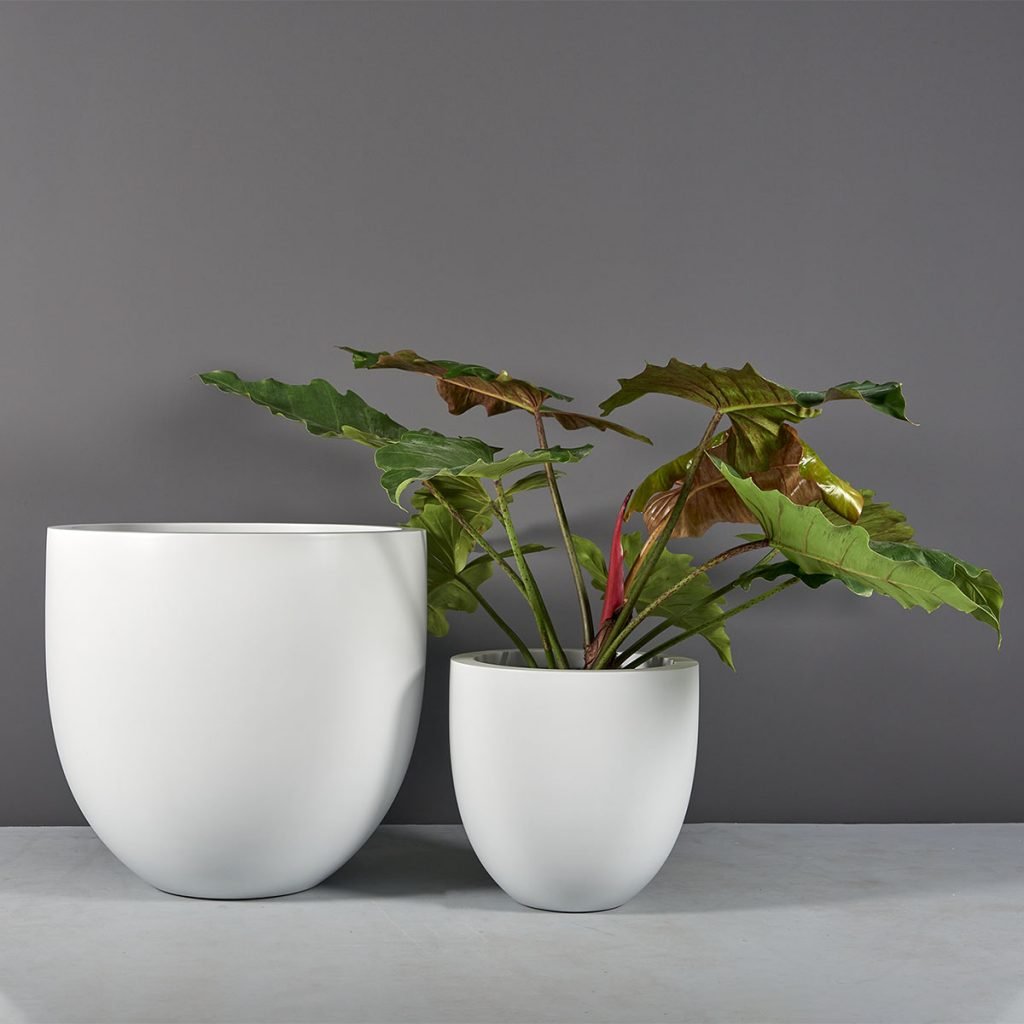
If you do want a round design for something large like a tree, steer clear of round pots with tapered bases as these have more stability issues.
There is also an argument that round pots encourage the formation of circling roots, which cause absorption issues. This isn’t really an issue if you have the right size pot!
Tall Pots or Small Pots?
Based on the perched water table theory, tall pots are clearly the superior choice as the air to water ratio is the largest and enables better gas exchange. For a broad range of plants, a tall and wide, rather than a tall and narrow pot, will be the most suitable choice. This will accommodate most watering methods and needs.
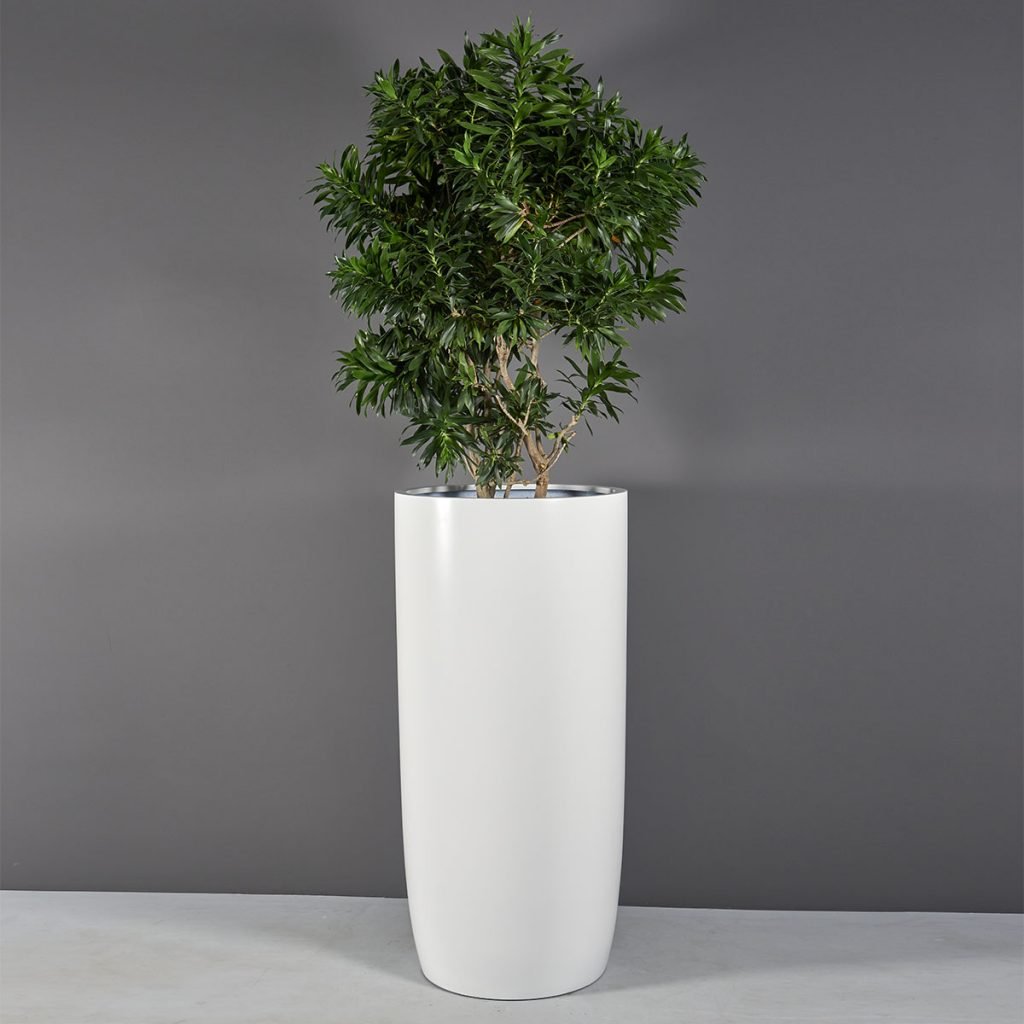
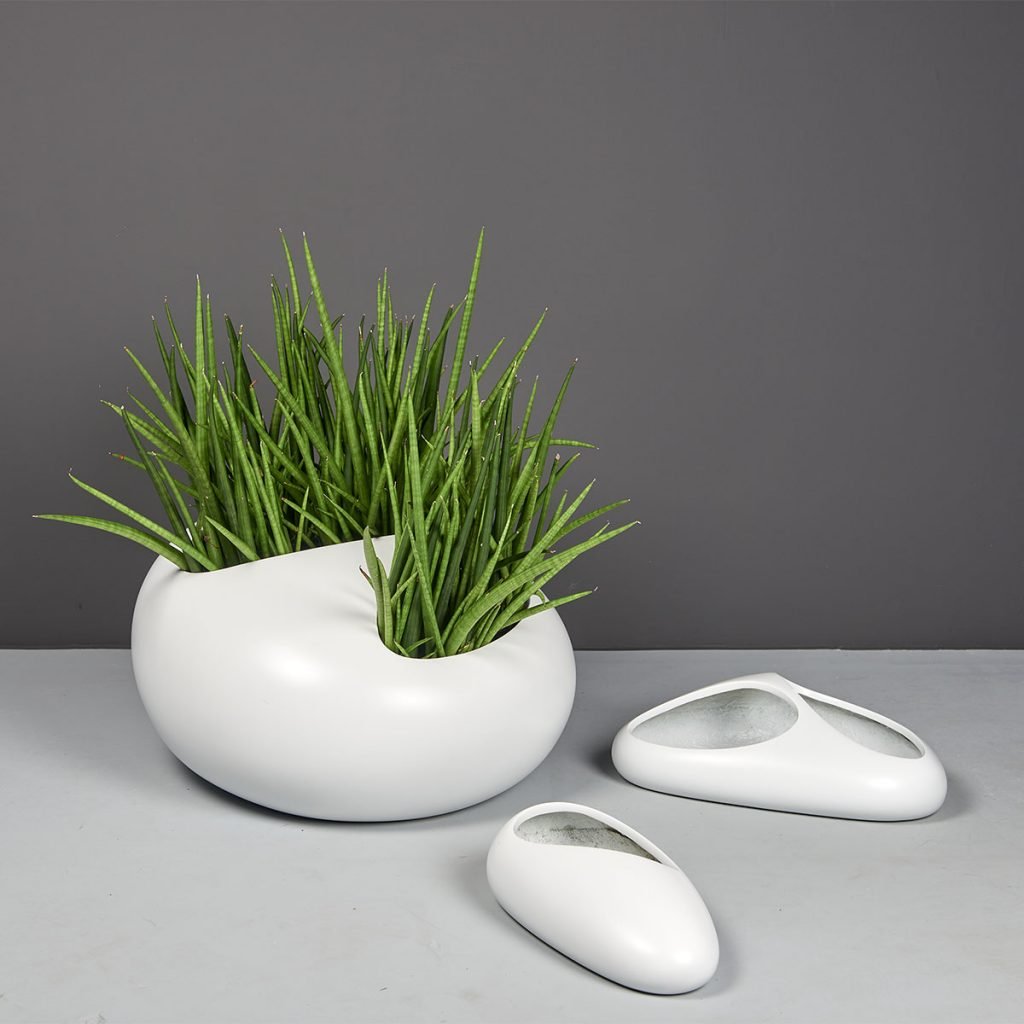
However, there are exceptions. Succulents and cacti tend to thrive in shallow containers as they have one main taproot that goes deep into the pot and many thinner, shorter hair roots that stay close to the surface.
Here are a few tips on decorating with tall planters.
Check out how we use Jay Scotts planters as the perfect tool to add potted plants of different shapes (tall, round, rectangular) around the perimeter of this hotel’s pool deck to create a more inviting, lush, and tropical feel.
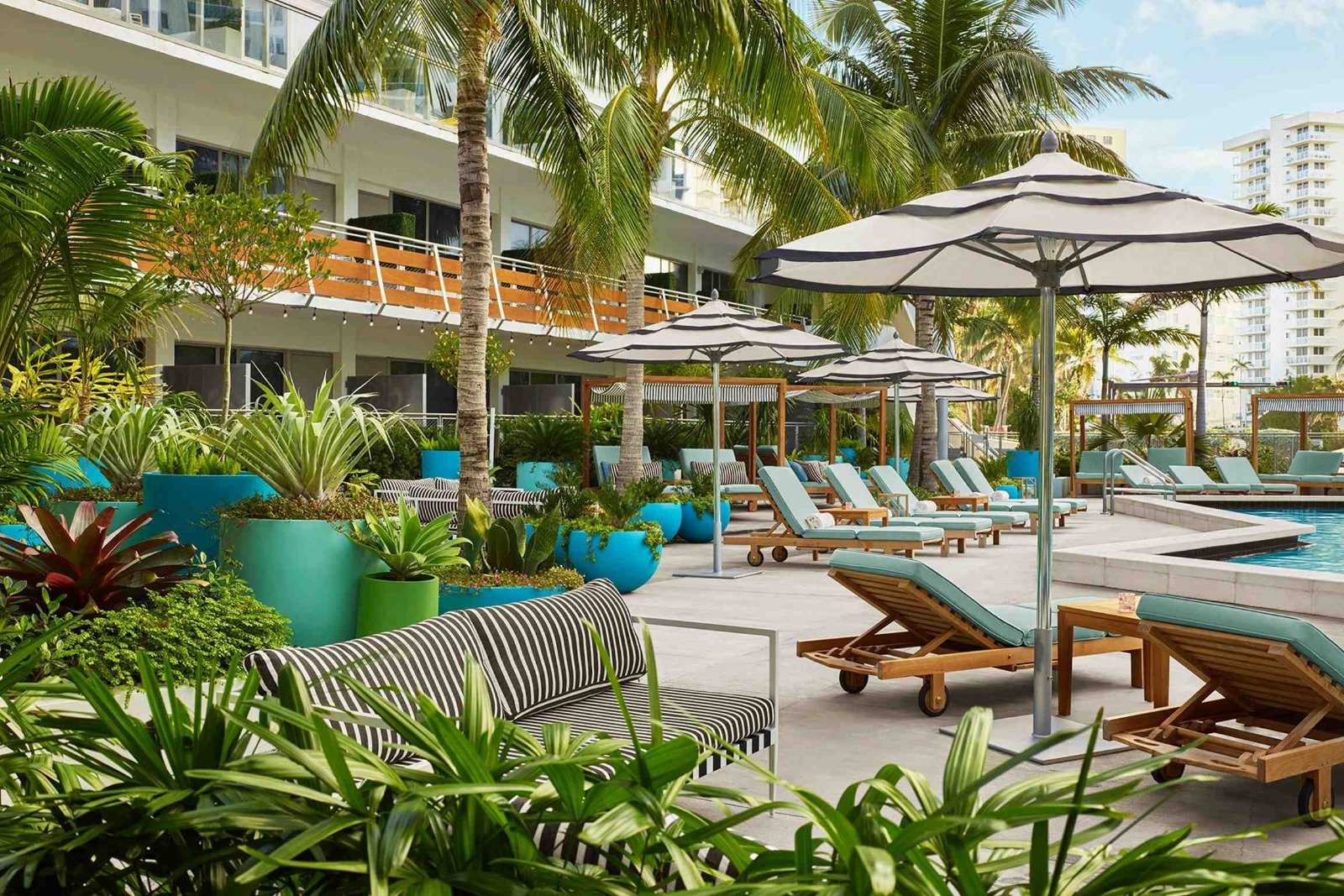
The Gates South Beach
The pool area is often the first thing that guests see when they arrive, and the client wanted it to make a good impression. See how we used planters to meet the needs of this luxurious property!
View ProjectDoes My Planter Need Holes For Drainage?
Drainage is king for potted plants. Selecting a container with holes at the bottom is always preferable to one without, this allows you some room to experiment with the watering needs of each individual plant. So, it is best not to use a container without a drainage hole unless you are very familiar with the plant and the amount of water it requires.

The drainage holes allow for excess water to drain out and reduce the chances of root rot. Place a saucer underneath the planter to hold water that leaks out.
How Planter Thickness Can Make Or Break Your Plant
One more aspect of plant pot size to consider is the thickness of the pot. Containers that are thick will protect the plant from harsh outdoor temperatures ranging from freezing to scorching. Thicker planters are more insulating so sudden swings in temperatures are less destructive.
Top-tier planter materials like fiberglass are already quite insulated, however, all of our fiberglass planters are made with thick fiberglass sheets to ensure plant health. Extra layers of fiberglass are added for large planter sizes to increase durability and strength so you never have to worry about your planter ruining your plants!
The Best Shapes And Sizes Of Jay Scotts Planters
We have a diversity of planters that suit any kind of project from home to commercial. This means that we have planter types for every kind of plant. Here is a short guide:
Jay Scotts round planters are great for bushy plants big or small. For garden decor, try using a shrub, a decorated hedge, or an ivy-like plant. This concept looks very appealing in commercial spaces.
Our cube pots work with trees and top-heavy plants as it provides a sturdy base. The straight lines of these pots also suit long straight plants like the snake plant – if interior design is your focus.
Our rectangular planters are available in various sizes from low (below 32″) and tall (over 32″) to allow the planting of various-sized plants. Rectangular planters are especially effective at planting shrubs, bushes, and rows of flowers to create dividers in commercial and residential spaces.
See Jay Scotts Planters In Action!
Check out our project for Pura Vida, a health and decor-conscious restaurant in Miami, Florida that
came to us with a challenge: create a private patio area that draws in diners while offering peace and
tranquillity once inside. Take a look at our solution!
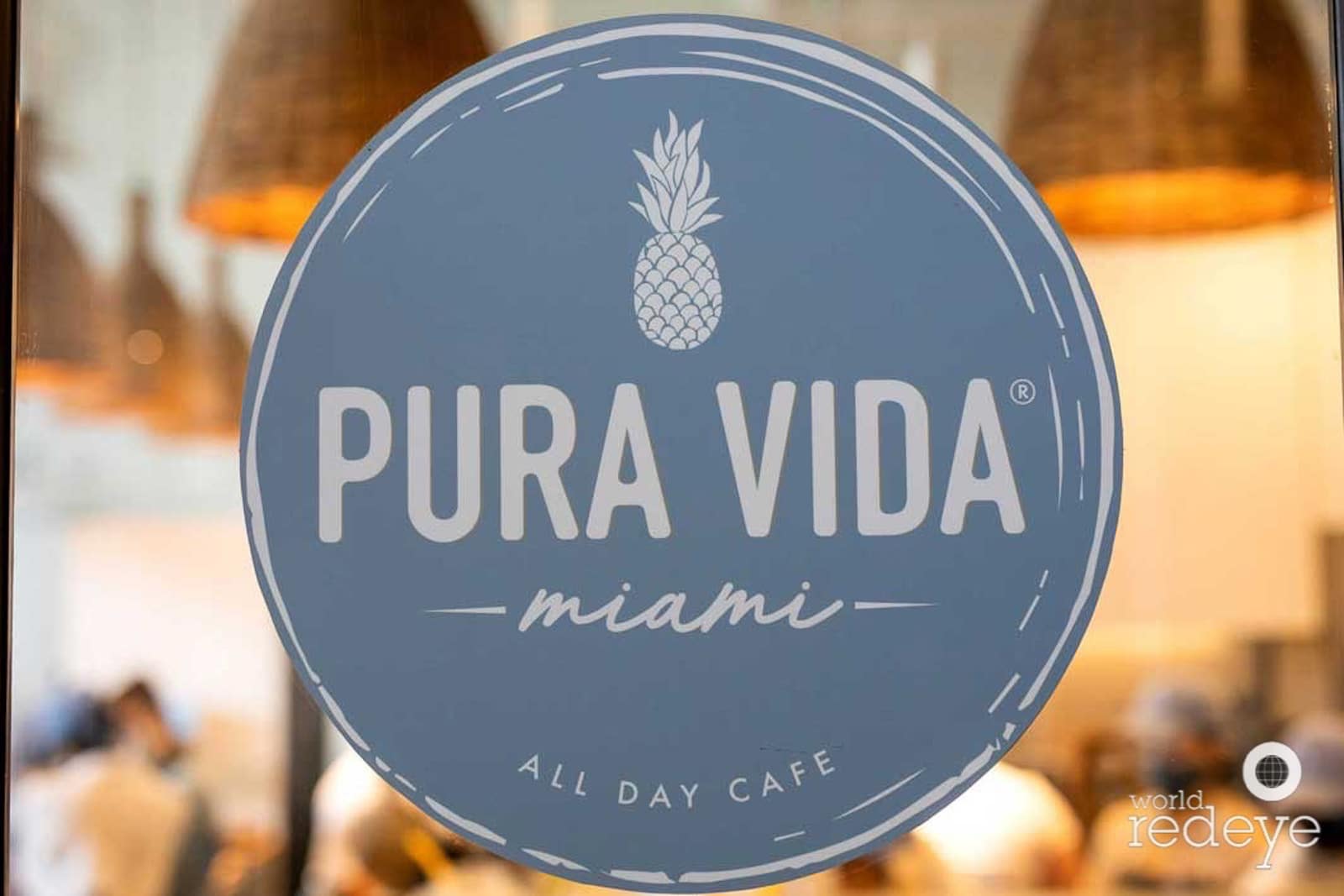
Pura Vida Las Olas, Miami
Creating a commercial space like this is challenging for clients as their customers often want privacy from the street while also having both an open and refreshing experience once inside. Our planters were the perfect solution!
View ProjectJay Scotts rectangular pots are great for hedges and providing organic privacy screens in offices. This design can also be used to provide barriers and outline specific areas such as creating an aisle to queue or an area to relax in.
We hope this guide made it clear the importance of choosing the right planter. The easy part is choosing the right brand. At Jay Scotts, we take pride in our fiberglass planters and their international reputation speaks for itself.
If you want to know why we chose fiberglass for our planters, check out our material comparison guide, or contact us about becoming a wholesaler, we welcome all questions!
